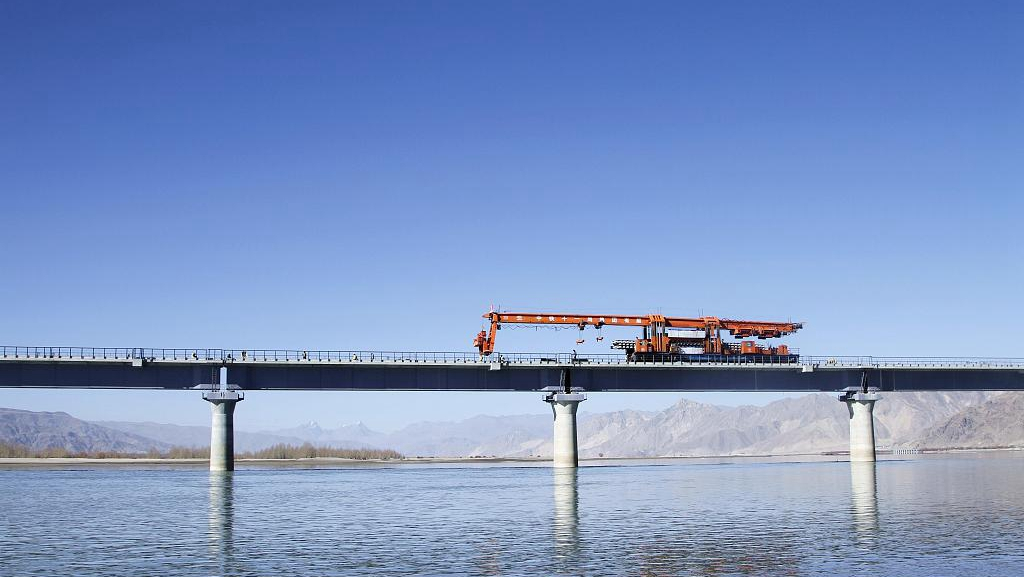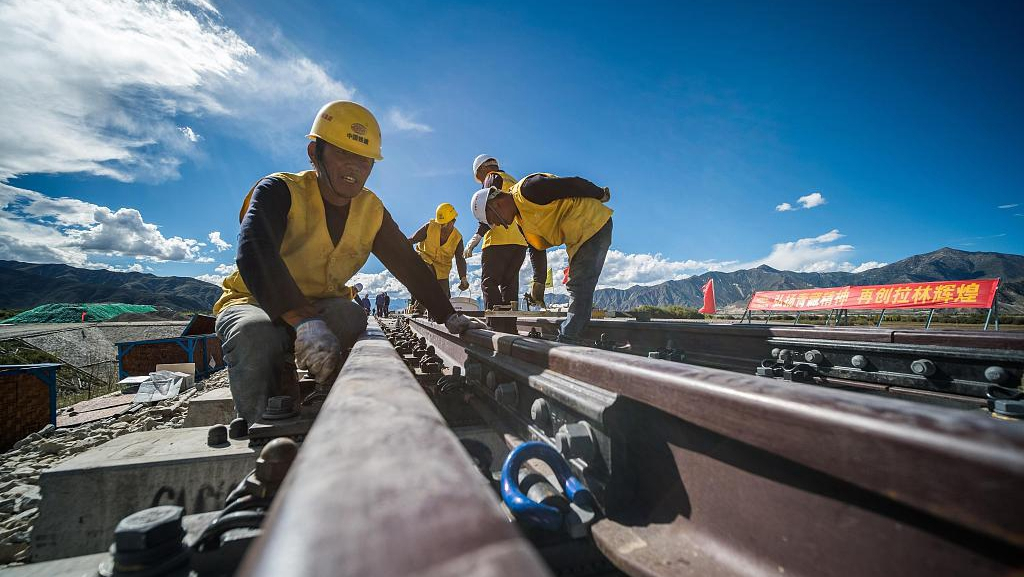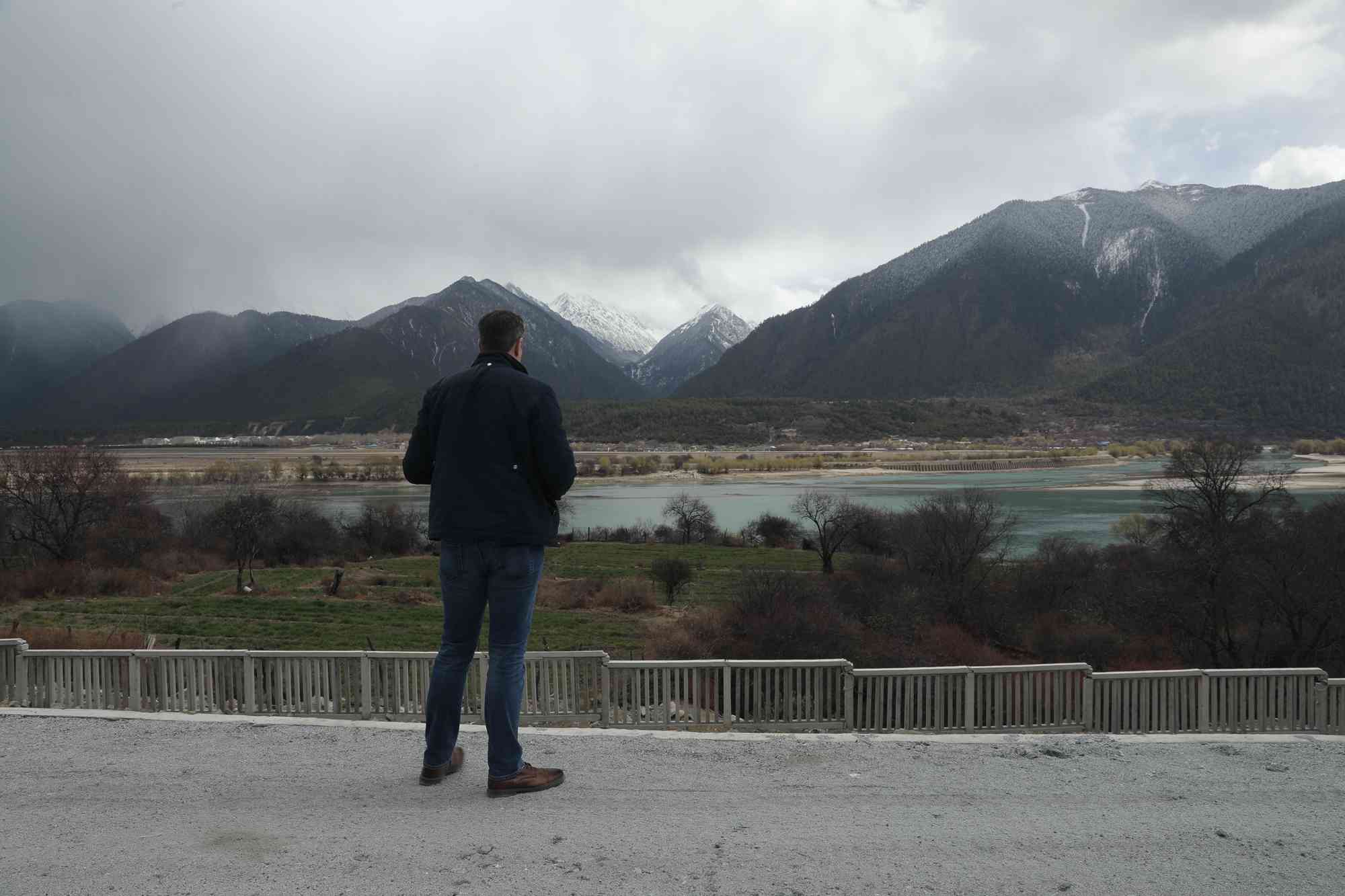
Travel
15:47, 26-Mar-2019
Travelling through Tibet: China spends billions on infrastructure
Jonathan Betz
02:33

China hopes traveling to Tibet Autonomous Region may soon become a lot easier. Massive infrastructure projects launched within the past decade are now nearing completion. But the work is extremely slow and dangerous.
The tranquil isolation of Tibet is suddenly changing. Billions of dollars are pouring in as China pulls this ancient land into the modern world, changing the landscape and people's lives.

Workers lay tracks on the Lhasa-Nyingchi section of the Sichuan-Tibet Railway. /VCG Photo
Workers lay tracks on the Lhasa-Nyingchi section of the Sichuan-Tibet Railway. /VCG Photo
Tashi is a construction worker at a local company that provides sand and stone to the railway. He says people in his village all bought cars to work for the company and their income now is pretty good.
Across Tibet, tracks are being laid for bullet trains and highways to soon criss-cross the Himalayas. Already, paved roads now reach all of Tibet's counties, helping bring a surge of tourists and newcomers.
But the stunning geography that draws so many, is also challenging engineers. Workers drove us deep into a remote mountain to show us what they face digging a train tunnel.

Jonathan Betz in the tunnel to see some of the challenges railway workers are facing in Nyingchi, Tibet Autonomous Region. /CGTN Photo
Jonathan Betz in the tunnel to see some of the challenges railway workers are facing in Nyingchi, Tibet Autonomous Region. /CGTN Photo
Luo Zhenping, chief engineer of the Lhasa-Nyingchi railway project tells us the most difficult thing they have to overcome is, first and foremost, the water. The second concern is the lack of oxygen. If they don't take proper precautions, the workers could easily stop breathing while working.
Nearby, crews continue drilling on what's been called the world's most challenging railway. They work around the clock, but are only moving less than a meter a day.

Jonathan Betz on the road foundation of the Lhasa-Nyingchi railway. /CGTN Photo
Jonathan Betz on the road foundation of the Lhasa-Nyingchi railway. /CGTN Photo
Eventually, this tunnel will help form Tibet's second railway in 2026. A 36 billion U.S. dollar project, spanning 1,700 kilometers connecting the regional capital – Lhasa, with the Chinese mega-city of Chengdu. It will cut a trip that used to take days to hours – which is all the inspiration Luo needs.
Luo says while the circumstances are quite difficult, he is glad to be building a railway on the Tibetan plateau – the backbone of the world. He is very proud, because this railway they are building is the road to heaven, bringing the roof of the world a little closer to Earth.

SITEMAP
Copyright © 2018 CGTN. Beijing ICP prepared NO.16065310-3
Copyright © 2018 CGTN. Beijing ICP prepared NO.16065310-3